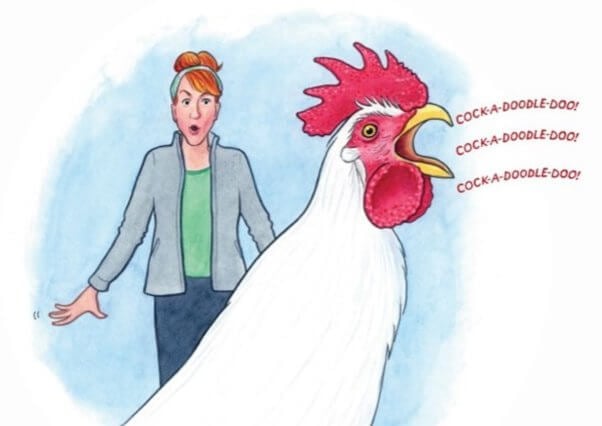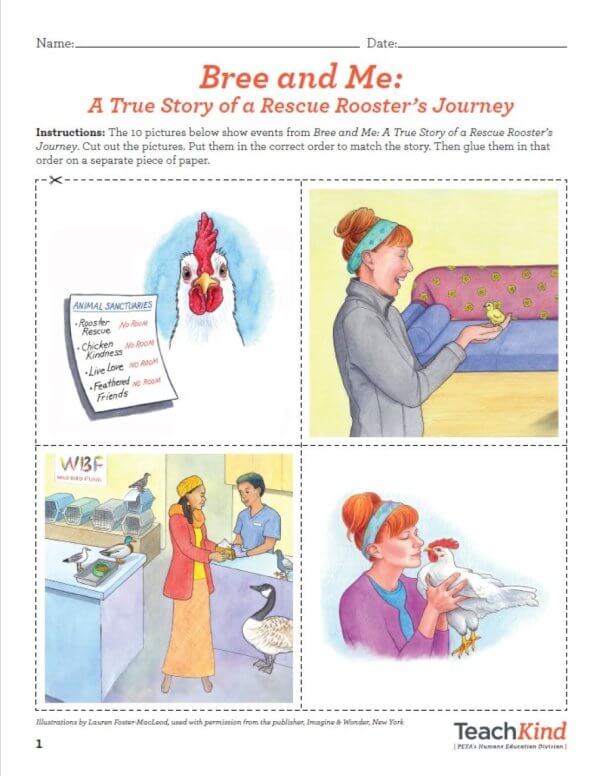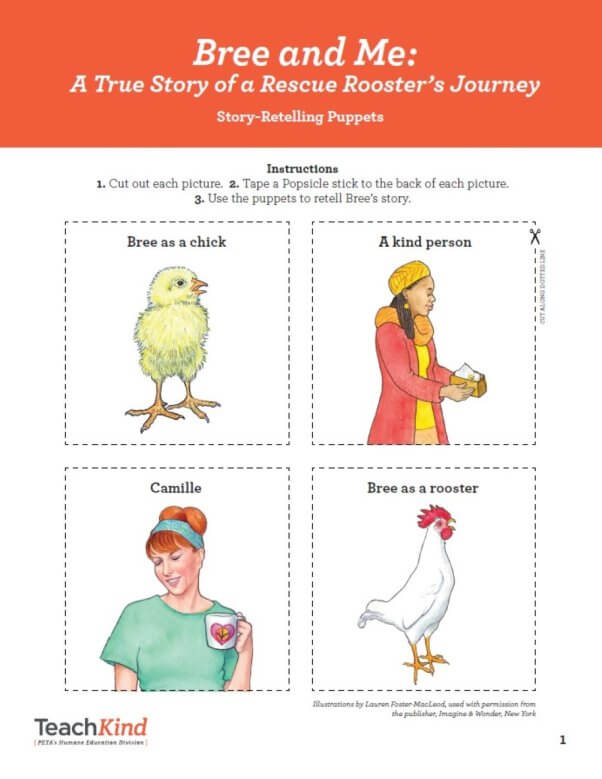Sometimes people say animals don’t have voices, but that’s not true! They do have voices, and Bree the rooster is using his to crow—“crow” is the name for a rooster’s call—his message of kindness to all.
Bree and Me: A True Story of a Rescue Rooster’s Journey by Camille Licate is about Bree the rooster, his human guardian, Camille, and the journey they set off on together when they became inseparable. Bree was rescued from the streets of New York City when he was a tiny chick before Camille knew whether he was a hen or a rooster. She agreed to foster him until he was old enough to go to a sanctuary, but when she learned that Bree was a rooster and that none of the sanctuaries had room for one, she decided to adopt him. There was just one problem: Roosters weren’t welcome in New York City. So Camille decided they’d move to a rooster-friendly town, and now their mission is to spread Bree’s messages: “Bree kind to all” and “Breelieve in a better world.”
Are you ready to share this inspiring story with your students? After reading the book to them, you can use our discussion questions below to keep them thinking and use our story-sequencing and -retelling activities to advance their reading comprehension.
Introducing the Book
You can begin by telling students that you’re going to read them a story about a rooster named Bree. Show them his photo on the dedication page and ask them if they’ve ever met a chicken. If they have, invite them to describe their experience. Explain to them that Bree is a real chicken who was rescued as a chick and that the book talks about his life growing up in New York City and moving to a small town.
This read-aloud is enjoyable for children because it includes clever messages that combine Bree’s name with the words “be” and “believe,” which students can repeat: “Bree kind to yourself, others, the planet, and all animals” and “Breelieve in a better world.”
Discussion Questions
After you read the book aloud to your students, you can use the following questions to initiate a class discussion.
Question: How did Camille feel when she learned that Bree was a rooster and that roosters weren’t allowed in New York City, where she lived? What did she do?
Possible answer: Camille was worried that Bree wouldn’t have anywhere to live, and she was unhappy that he wasn’t welcome in the city. She adopted him and moved to a smaller town, where he was welcome because she loved him and wanted to make sure that he had a loving home.
Question: How do the illustrations help explain the story?
Possible answer: The illustrations help show that chickens are individuals with their own personalities and that, in some ways, they behave just like cats and dogs. The illustrations also show us that chickens and humans can bond with each other just as cats and dogs can bond with humans and that when it comes to love, species doesn’t matter.
The following questions would be ideal for a turn-and-talk with a partner:
- What does the author want us to feel about Bree? Why?
- How is Bree similar to an animal you know?
- All chickens are like Bree in that they want to feel loved, be with their family, and have the freedom to be themselves, but most of them aren’t given the opportunity to do these things. (Background information for teachers is available here.) What can you do to help chickens? (Information about alternatives to eating chickens is available here. This information can help you discuss ways to help chickens that children may not be aware of.)
Real-Life Connections
Ask students if they’ve ever heard an animal companion make a lot of noise (like a bark or a meow) and, if so, how a parent or guardian reacted to it. How do they think that made the animal feel? Then compare those situations to the way Bree’s guardian reacted when he started crowing loudly. Discuss together ways to handle various interactions between humans and animals in a positive way. For instance, someone could close the blinds or curtains when a dog barks at a neighbor outside and give them a chew toy to distract them.

Sequencing
Sequencing events in a text is an important reading comprehension strategy. You can use this sequencing activity to help students identify the beginning, middle, and end of the story. It will also encourage them to reflect on Bree’s journey and the way Camille committed herself to caring for him, even though he grew into a rooster and his loud crowing caused them to become unwelcome in the city, which forced them to move.

Download
Story Retelling
Story retelling promotes reading comprehension and helps students develop expressive language. They can use these puppets to retell Bree’s heartwarming story again and again. It’s perfect as a center activity.

Download
Download these on TPT!
Like these ideas? Please share them to help inspire other teachers to incorporate compassion for animals into their reading lessons.
Need more inspiration for the classroom? Sign up to receive TeachKind News.
